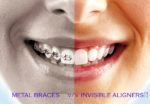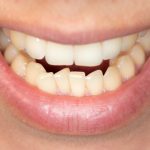Closing the Gap: A Comprehensive Guide on How to Fix Teeth Gap

A beautiful and healthy smile can be the perfect accessory to any outfit. However, not everyone is blessed with a perfect set of teeth, and one of the most common dental issues is teeth gap or diastema. A teeth gap can make people feel self-conscious about their smile, leading to a lack of confidence and reduced self-esteem. Fortunately, there are several ways to address this issue, ranging from simple home remedies to more complex dental treatments. If you’re looking for a comprehensive guide on how to fix teeth gap, you’ve come to the right place. This article will explore the different causes of teeth gap, the available treatment options, and the pros and cons of each method. Whether you’re dealing with a small gap or a larger one, there are several effective ways to close the gap and achieve the smile of your dreams. So, let’s dive in and learn more about how to fix teeth gap!
Teeth gap, also known as diastema, is a space between two teeth that is wider than normal. This gap is typically found between the two upper front teeth, but it can occur anywhere in the mouth. There are several causes of teeth gap, including genetics, abnormal growth of the jawbone, thumb-sucking, tongue-thrusting, and gum disease. In some cases, teeth gap can also be caused by missing teeth, which can cause the surrounding teeth to shift and create a gap. Teeth gap is a common dental issue that can affect the appearance of the smile and may also cause functional problems such as difficulty in chewing or speaking. Fortunately, there are several dental treatments available to close the gap and improve the overall appearance and function of the teeth.
Closing teeth gaps is of utmost importance as it not only enhances the aesthetic appearance of your smile but also improves your overall oral health. When teeth are spaced too far apart, it can lead to issues such as difficulty in chewing food, speech impediments, and increased risk of gum disease. Additionally, gaps between teeth can cause teeth to shift and become misaligned, which can lead to bite problems and temporomandibular joint (TMJ) disorders. By fixing teeth gaps, you can improve your self-confidence and prevent potential dental health problems. There are various treatment options available, such as braces, clear aligners, veneers, and dental implants, that can effectively close gaps and provide a beautiful, healthy smile.
Orthodontic Treatments
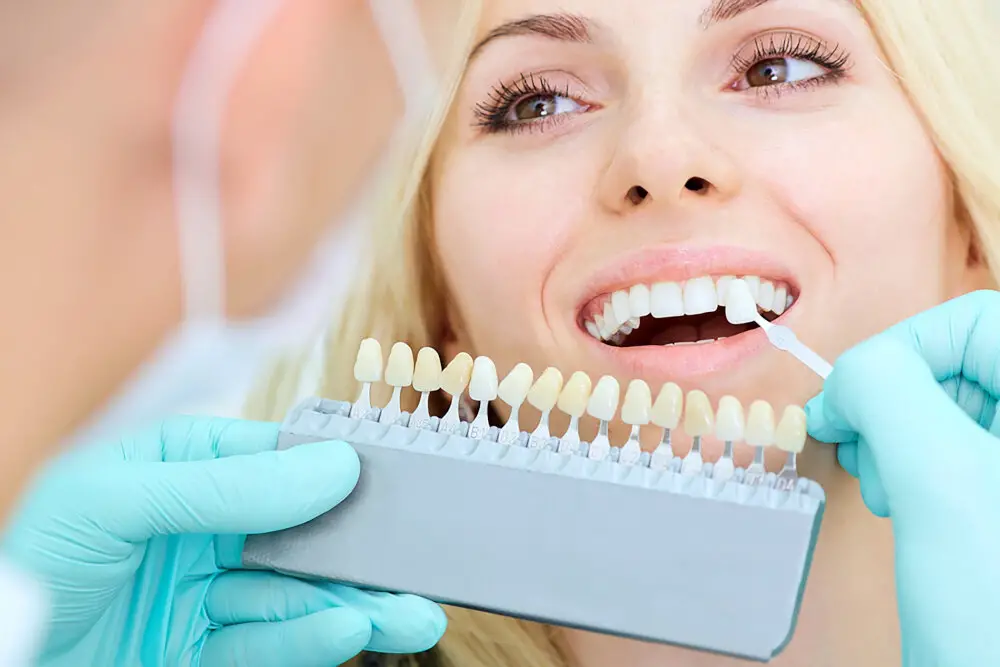
Orthodontic treatments are a range of procedures designed to correct misaligned teeth and jaws. These procedures aim to improve the appearance of the teeth and the overall functionality of the mouth. Orthodontic treatments can be used to fix various dental issues such as crowded teeth, overbites, underbites, and gaps between teeth. These treatments use various appliances such as braces, retainers, aligners, and headgear to move teeth into the desired position. Braces are the most common orthodontic treatment used to close gaps between teeth. They consist of metal wires that are attached to brackets that are cemented onto the teeth. Braces work by applying pressure to the teeth, gradually moving them into the desired position. Braces are typically worn for a period of 6 months to 2 years, depending on the severity of the gap. Retainers are another common orthodontic treatment used to close gaps. They are custom-made devices that hold the teeth in the correct position after braces have been removed. Aligners, such as Invisalign, are also becoming more popular as an alternative to traditional braces. These clear plastic trays are worn over the teeth and gradually move them into the desired position. Orthodontic treatments can be expensive, but they are an effective way to close gaps and improve the overall appearance and functionality of the teeth.
Braces are a popular orthodontic treatment used to correct teeth gaps and other dental misalignments. They consist of brackets, wires, and rubber bands that work together to shift teeth into their proper positions. Depending on the severity of the gap, braces may need to be worn for several months or even years. While braces can be uncomfortable and require frequent adjustments, they are highly effective in closing gaps and improving overall dental health. In addition to correcting gaps, braces can also address issues such as overbites, underbites, and overcrowding. With proper care and maintenance, braces can provide patients with a beautiful and healthy smile for years to come.
Invisalign is a popular orthodontic treatment option that uses clear, removable aligners to gradually shift teeth into their desired positions. These aligners are custom-made for each patient using 3D imaging technology, making them a comfortable and nearly invisible alternative to traditional braces. Invisalign can treat a variety of dental issues, including teeth gaps, overcrowding, and misalignment, with typically faster treatment times than traditional braces. Patients can remove the aligners to eat, brush, and floss, making it easy to maintain good oral hygiene throughout the treatment process. Invisalign is an excellent choice for those who want to improve the appearance of their smile without the discomfort or visibility of traditional braces.
Retainers are orthodontic devices that are used to maintain the position of teeth after dental treatment. They are usually made of plastic or metal and are custom-fit to the patient’s teeth. Retainers work by applying pressure to the teeth, which helps to keep them in place. They are often used after braces are removed to keep teeth from shifting back to their original positions. Retainers can be worn full-time or part-time, depending on the patient’s needs. It is important to wear retainers as directed by the orthodontist to ensure that teeth remain in their new position and to prevent the need for further dental work in the future.
Clear aligners are a popular and effective option for closing teeth gaps. These custom-made, clear plastic trays gradually shift teeth into their desired position without the need for metal brackets or wires. Clear aligners are virtually invisible, allowing wearers to maintain a natural-looking smile throughout their treatment. They are also removable, making it easier to maintain good oral hygiene and enjoy favorite foods without restrictions. Clear aligners are a great choice for patients who want to improve the appearance of their smile without the hassle and discomfort of traditional braces. With proper care and adherence to a treatment plan, clear aligners can help close teeth gaps and give patients the confidence to show off their beautiful, straight smile.
Dental Procedures
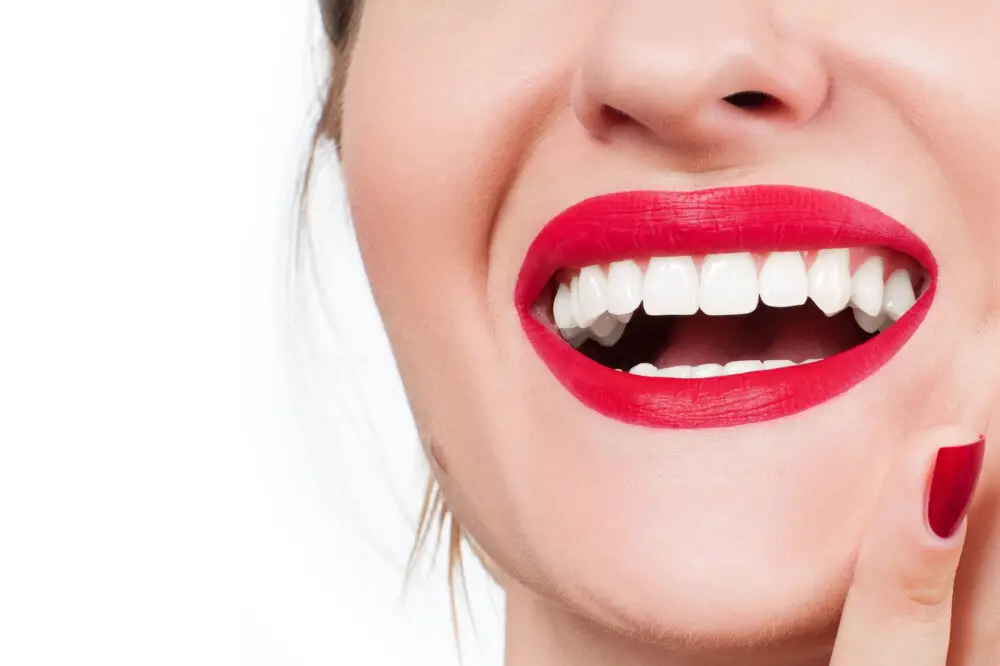
Dental procedures are a crucial aspect of oral hygiene and maintaining a healthy smile. When it comes to fixing teeth gaps, there are several dental procedures available, each with its own advantages and disadvantages. One of the most common procedures is orthodontic treatment, which involves the use of braces or aligners to gradually move teeth into the desired position. This treatment method is highly effective in closing gaps between teeth, but it can take several months or even years to achieve the desired results. Additionally, braces or aligners can be uncomfortable and may require frequent adjustments by a dental professional. Another dental procedure that can help fix teeth gaps is the use of veneers. Veneers are thin, custom-made shells that are placed over the surface of the teeth to improve their appearance. They can be used to close gaps between teeth, as well as to fix other cosmetic issues such as chips or stains. Veneers are a less invasive alternative to orthodontic treatment, as they do not require the teeth to be moved. However, they can be expensive and may not be covered by dental insurance. It is important to discuss all available options with a dental professional to determine the best treatment method for each individual case.
Bonding is a cosmetic dental procedure that aims to close gaps between teeth. It involves using a tooth-colored composite resin material to cover the gaps and improve the appearance of the teeth. In bonding, the dentist first roughens the surface of the teeth, applies a bonding agent, and then molds the composite resin material onto the teeth. After shaping it to the desired look, the material is cured with a special light, which hardens the bonding. Bonding is a quick and painless procedure that can be done in a single visit to the dentist. It is an affordable and effective solution to close gaps between teeth and improve your smile.
Dental veneers are a popular solution to fix teeth gap, as well as other cosmetic dental concerns. These thin shells, typically made of porcelain, are custom-made to fit over the front surface of the teeth. They can be used to close gaps, hide chips or cracks, and improve the appearance of discolored or misshapen teeth. Veneers are a minimally invasive option that can be completed in just a few visits to the dentist. They are also durable and stain-resistant, making them a long-lasting solution for a more confident smile. However, it’s important to note that veneers may not be suitable for everyone, and a consultation with a qualified dentist is necessary to determine the best treatment plan.
Crowns are a popular dental option for those looking to fix teeth gap. A crown is a cap that covers the entire tooth, providing both cosmetic and functional benefits. It can be used to cover a tooth that is chipped, cracked, discolored or misshapen, improving the appearance of teeth and closing any gaps. Crowns are custom-made to fit the individual’s tooth structure and can be made from a variety of materials including porcelain, ceramic, and metal. They are a durable and long-lasting solution that can restore the natural look and function of teeth, helping to close the gap and provide a more confident smile.
While orthodontic treatments like braces and aligners are popular solutions for fixing teeth gaps, dental bridges are also an effective option. Bridges are prosthetic devices that are used to replace missing teeth by bridging the gap between two teeth. They are usually made of porcelain, metal or a combination of both, and are attached to the teeth on either side of the gap. Bridges not only improve the appearance of a smile, but they also restore proper chewing and speaking abilities. They can last for many years with proper care and maintenance, making them a long-term solution for closing teeth gaps.
Natural Remedies
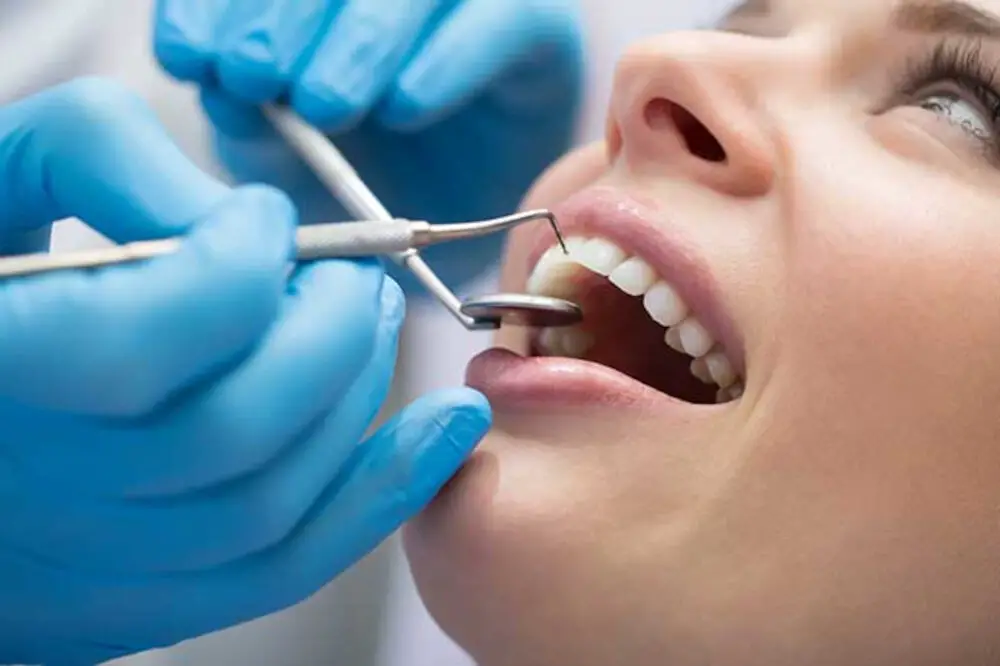
Teeth gaps are a common concern among individuals, as it can negatively impact their smile and overall appearance. While there are various dental treatments available, some individuals prefer natural remedies for fixing teeth gaps. One of the most popular natural remedies is the use of orthodontic bands, which are small elastic bands that can be placed around the teeth to gradually move them closer together. While this method can take several months to show results, it is a safe and affordable option for those who wish to avoid invasive dental procedures. Another natural remedy for fixing teeth gaps is oil pulling, which involves swishing coconut oil or sesame oil in the mouth for about 15-20 minutes daily. This ancient Ayurvedic practice is believed to remove toxins from the mouth, improve oral health, and promote teeth alignment. While there is limited scientific evidence to support the effectiveness of oil pulling for fixing teeth gaps, many individuals have reported positive results after incorporating it into their daily routine. However, it is important to note that oil pulling should not replace regular brushing and flossing, as these are essential for maintaining good oral hygiene.
Oil pulling is an ancient Ayurvedic practice that involves swishing oil in the mouth for 20 minutes to improve oral health. The oil is traditionally made from sesame, sunflower or coconut oil, and the swishing action is believed to remove harmful bacteria and toxins from the mouth. Proponents of oil pulling claim that it can reduce bad breath, prevent cavities, whiten teeth, and even improve overall health by removing toxins from the body. However, while some studies suggest that oil pulling may have some benefits, more research is needed to fully understand its potential effects on oral health. Despite this, oil pulling remains a popular alternative therapy for those seeking natural solutions for their dental health concerns.
Activated charcoal, also known as activated carbon, is a highly porous substance that is made by heating carbon-rich materials, such as wood, coconut shells, or peat, at high temperatures in the presence of gas. Its unique properties make it a popular natural remedy for teeth whitening and dental detoxification. Activated charcoal works by adsorbing (not absorbing) toxins and impurities from the mouth, including bacteria, plaque, and stains. It is also believed to balance the pH levels in the mouth and promote healthy saliva production, which helps prevent tooth decay and gum disease. However, it is important to use activated charcoal with caution and under the guidance of a dental professional, as it can be abrasive and may cause damage to the enamel if used improperly.
Clove oil is a natural remedy that has been used for centuries to treat various dental issues, including teeth gaps. This essential oil has powerful antiseptic and analgesic properties that can help to reduce inflammation and soothe pain in the gums. Clove oil contains eugenol, which is a natural anesthetic that can numb the area around the gap and provide relief from discomfort. Additionally, clove oil has antibacterial properties that can help to prevent infection and promote healing. To use clove oil for teeth gaps, mix a few drops with a carrier oil and apply the mixture to the affected area using a cotton ball or Q-tip. However, it is important to note that clove oil should be used in moderation and should not be ingested, as it can be toxic in high doses.
Baking soda is a versatile and affordable product that can be used in a variety of ways to help fix teeth gap. Its abrasive properties can help remove surface stains and plaque buildup, leading to a brighter and cleaner smile. Additionally, baking soda can also be used as a natural tooth whitener, helping to reduce the appearance of gaps between teeth. By mixing baking soda with water to create a paste and applying it to the teeth for a few minutes each day, individuals can gradually see a difference in the color and appearance of their teeth. However, it is important to note that baking soda should be used in moderation as excessive use can lead to enamel erosion and tooth sensitivity.
Lifestyle Changes
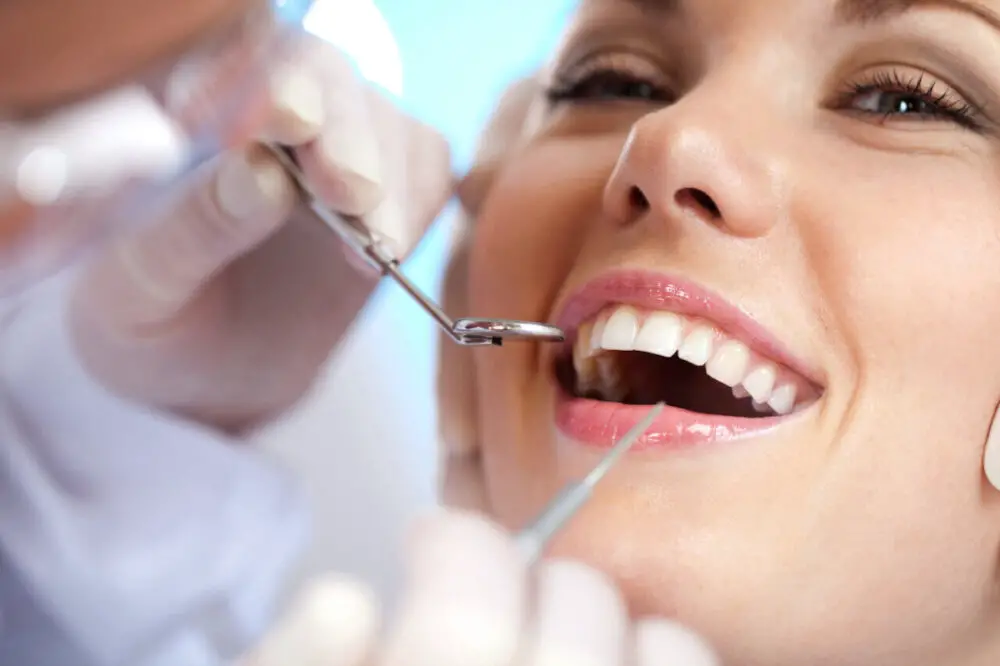
Lifestyle changes play a vital role in closing teeth gaps. One of the primary causes of teeth gaps is improper oral hygiene, which leads to the accumulation of plaque and bacteria, damaging the teeth and gums. Maintaining oral hygiene by brushing twice a day, flossing, and using mouthwash can help prevent and reduce teeth gaps. It is also essential to consume a balanced diet consisting of vitamins and minerals that promote healthy teeth and gums, such as calcium, vitamin D, and phosphorus. Avoiding sugary and acidic foods and drinks can also help prevent tooth decay and erosion, which can worsen teeth gaps. Another lifestyle change that can help close teeth gaps is quitting smoking. Smoking not only stains teeth but also leads to gum disease and tooth loss, both of which can contribute to teeth gaps. In addition, smoking decreases blood flow to the gums, making it harder for the body to heal and repair damaged tissues. Quitting smoking can improve overall oral health and reduce the risk of teeth gaps and other oral health problems. Additionally, reducing stress levels through exercise or relaxation techniques can also help prevent teeth gaps by reducing the risk of teeth grinding and clenching, which can cause teeth to shift and create gaps. By making these lifestyle changes, individuals can improve their oral health and reduce the risk of teeth gaps.
Diet changes can play a significant role in closing teeth gaps. A diet rich in calcium and vitamin D can help to strengthen and maintain healthy teeth and bones. These nutrients can be found in dairy products, leafy greens, and fish. Additionally, consuming foods that are low in sugar and acid can prevent tooth decay and erosion, which can widen gaps over time. Chewing crunchy, fibrous foods like apples and carrots can also help to stimulate saliva production and remove plaque buildup. Making these dietary changes can not only improve overall oral health, but also contribute to closing teeth gaps.
Quitting smoking is crucial not only for maintaining overall health but also for oral health. Smoking is one of the leading causes of tooth loss, gum disease, and oral cancer. It can also affect the appearance of teeth by causing discoloration, bad breath, and tooth decay. However, quitting smoking can be a challenging task for many people. Nicotine is a highly addictive substance that can cause withdrawal symptoms, making it difficult to quit. But with the help of support from family, friends, and healthcare professionals, along with the use of nicotine replacement therapy and other cessation aids, it is possible to quit smoking and improve oral health.
Thumb sucking or pacifier use may seem like harmless habits for infants and young children, but they can have long-term effects on the development of their teeth and jaw. These habits can cause the teeth to shift and create gaps or misalignments. To avoid these issues, parents should discourage thumb sucking and pacifier use as early as possible. Alternatives such as offering a soft toy or blanket for comfort can help distract from the habit. Additionally, positive reinforcement and gentle reminders can help children break the habit. By taking proactive steps to discourage thumb sucking and pacifier use, parents can set their children up for a healthier, happier smile in the future.
Proper oral hygiene is essential to maintain healthy teeth and gums. It involves brushing your teeth twice a day with a fluoride toothpaste, flossing daily, and using mouthwash to kill harmful bacteria. Additionally, it’s crucial to visit your dentist regularly for professional cleanings and checkups. By practicing good oral hygiene, you can prevent tooth decay, gum disease, and other dental problems, including teeth gaps. In some cases, teeth gaps can be the result of poor oral hygiene, and maintaining good habits can help prevent them from forming. Proper oral hygiene is a critical component of overall health and well-being, and it’s essential to prioritize it in your daily routine.
Closing the gap between teeth is a common cosmetic dental concern, and there are several ways to fix it. One of the most popular methods is the use of braces, which straighten and align teeth over time. Another option is to use clear aligners, which are virtually invisible and can deliver results in a shorter time frame. Dental bonding is also a viable solution, where composite resin is applied to fill in gaps and shape teeth. Veneers are another option, where thin porcelain shells are applied to the front of teeth to improve their appearance. Lastly, in severe cases, dental implants or bridges may be necessary to replace missing teeth and close gaps. With so many options available, it’s important to consult with a dental professional to determine the best course of action for each individual case.
If you have a teeth gap that is causing you distress, it is essential to seek professional help. Consulting with a dental professional can not only improve the appearance of your smile but also improve your oral health. A professional can assess the severity of your gap and recommend the best treatment plan for your specific needs. They can also provide you with valuable information on how to maintain good oral hygiene and prevent any future dental issues. Don’t let a teeth gap hold you back from feeling confident in your smile. Seeking professional help is the first step towards closing the gap and achieving a beautiful, healthy smile.
While the article focuses on fixing teeth gaps, it’s important to note that maintaining good oral health is crucial in preventing dental issues such as gaps. Poor oral hygiene can lead to plaque buildup, which can cause tooth decay and gum disease. These conditions can then lead to gaps, as well as other dental problems. Furthermore, good oral health can also improve overall health, as gum disease has been linked to various health issues such as heart disease and diabetes. Therefore, practicing good oral hygiene habits such as brushing and flossing regularly, getting regular dental check-ups, and avoiding sugary and acidic foods can not only prevent dental gaps but also promote overall health and well-being.
Conclusion

In conclusion, closing the gap between teeth is a common dental issue that can affect one’s confidence and self-esteem. However, with the advancements in orthodontic treatments and cosmetic dentistry, fixing teeth gaps has become more accessible and effective. From traditional braces to clear aligners, dental bonding, and veneers, there are various options available to address teeth gaps. It is essential to consult with a qualified dentist or orthodontist to determine the most suitable treatment plan based on individual needs and preferences. With proper care and maintenance, the results of closing teeth gaps can be long-lasting, providing a beautiful and confident smile that can enhance one’s overall quality of life.

